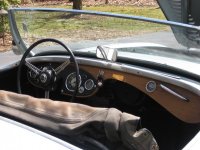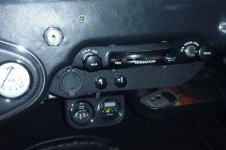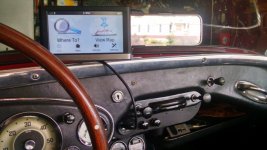Duane--
Though I understand your desire for originality sometimes it is trumped by safety. A friend of mine's Ferrari Dino 264 had a major fire due to as short in the ammeter wires as they passed through the firewall.
I know the common wisdom is that cars with generators should have ammeters and those with alternators should have voltmeters but I must wonder about the logic behind this, as bottomline it is system voltage that starts the car versus the momentary state of things as indicated by an ammeter.
BTW Hagerty's paid something over $100K for the repairs to my friend's Dino but he lost the use of the car for over a year while a new wiring loom was painstakingly made by a trusted source in Italy.
Michael,
I understand your concerns, but I am definitely
not compromising safety for originality!!! Correctly engineered and maintained, you can have both! As I said earlier, a properly installed,
fused, (Not commonly done) and maintained meter is perfectly safe. I feel for your Ferrari friend, but had he correctly fused the system the shorted wire at fire wall would have only resulted in simply a blown fuse and not a fire. Unfortunately fused systems were not installed at the factory, but we've learned allot about safety over the years.
Additionally, proper maintenance is just as important. Critical systems need to be inspected and maintained in order to maintain safety. Just as you would not drive around with a leak in your petrol tank, you should not drive around with poor ammeter wiring! (As your unfortunate Ferrari friend obviously found out the hard way.)
If a person is not comfortable with electrical systems and cannot inspect and maintain an
unfused ammeter system, they should definitely not have or install one!
Thanks,
Duane (BSEE)
Edit:
A properly installed fused ammeter system is safe for all Healey owners and almost everybody else! Second Edit: Added the word "unfused".


 Hi Guest!
Hi Guest!

 smilie in place of the real @
smilie in place of the real @
 Pretty Please - add it to our Events forum(s) and add to the calendar! >>
Pretty Please - add it to our Events forum(s) and add to the calendar! >> 






